Create and Use Deployments and Jobs
Overview
Deployments and jobs are custom-defined applications that you can run in your Saturn Cloud account. A deployment can be a model, a dashboard, or another application, and it usually runs continuously. A job is similar, except that it runs only once or at a designated interval only. Deployments and jobs are both types of resources, which are distinct computing elements of Saturn Cloud.
TL;DR
A job is a collection of code that completes a task and concludes. Jobs may run either on a scheduled recurring basis, or as needed. A deployment is a collection of code that is continuously running.How to Create Deployments and Jobs
Deployments and jobs can be created in a very similar manner to Jupyter server resources.
Deployments
To create a deployment, go to the Resources tab of Saturn Cloud and press New Deployment

This pops open a screen to choose the particular options for the deployment.
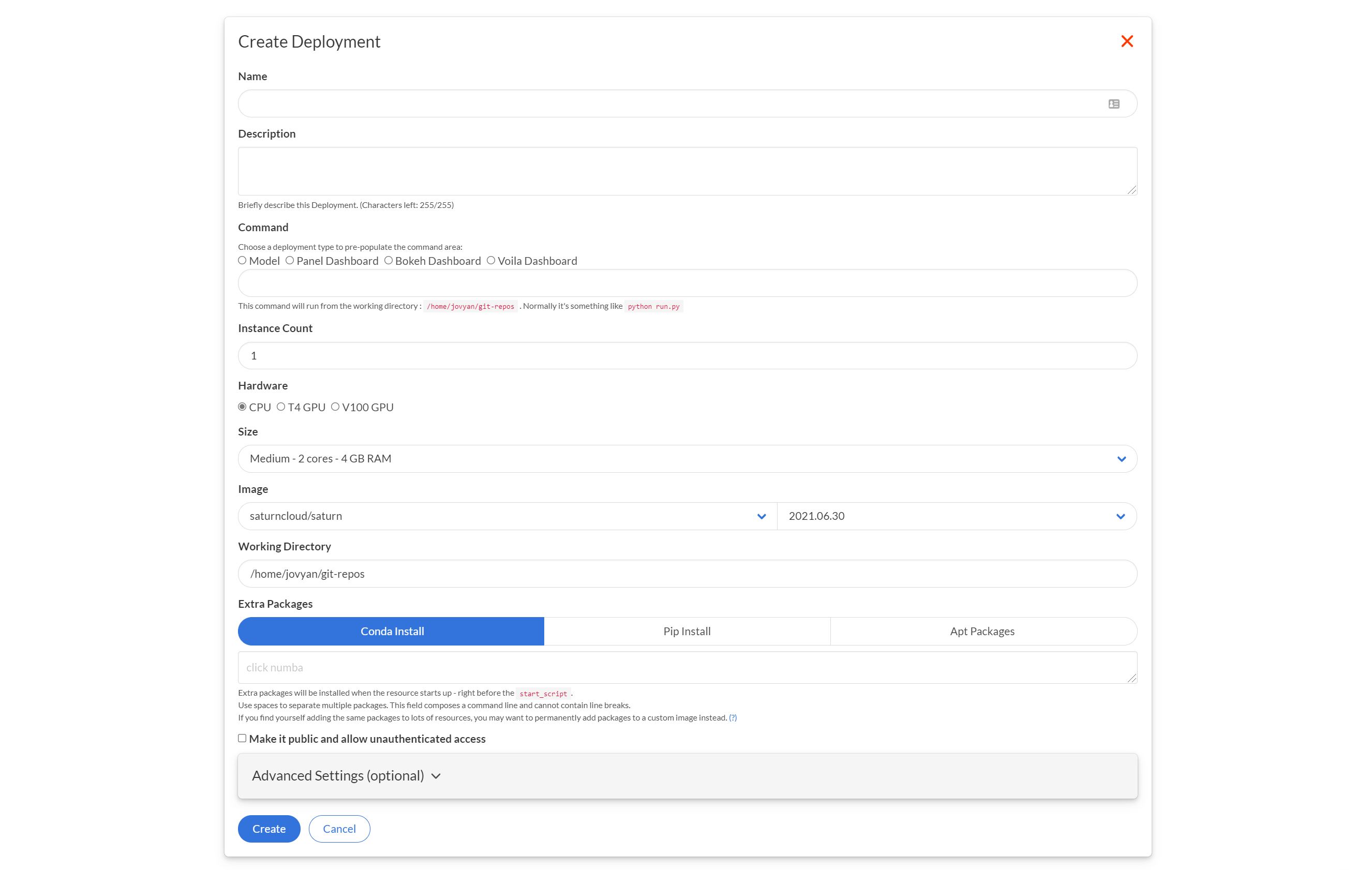
The options to set up the deployment are as follows:
- Name - the name of the deployment (must be unique).
- Command - the command to execute the deployment within the resource. These can vary dramatically depending on what the deployment task is (ex: run a panel dashboard or flask API). The command must listen to port 8000 for requests, no other ports will be open. The server must also be bound to
0.0.0.0and not127.0.0.1. Pressing the radio buttons will populate some common defaults. - Hardware - the type of hardware to use for the deployment, either a CPU or GPU.
- Size - the size of the instance to use for the deployment.
- Image - the image to use for the deployment.
- Environment Variables (Advanced setting) - any specific environment variable values for the deployment.
- Start Script (Bash) (Advanced setting) - the script to run at startup of the image before the deployment code runs.
- Working Directory (Advanced setting) - where within the file system the deployment command should be executed.
After choosing these options and pressing the create deployment button, you go be sent to the resource page for that deployment. Pressing the green arrow next to the deployment name will cause the deployment to begin running.
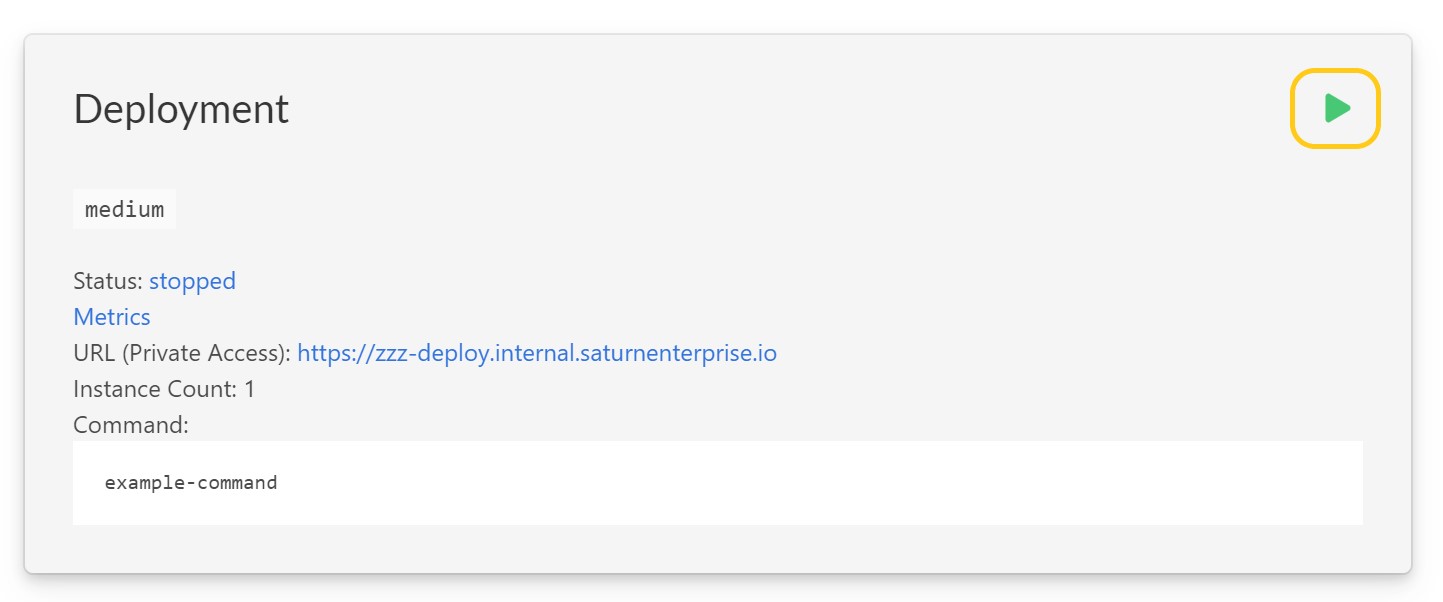
Note:
Be aware that Deployments are constantly running. This means that they are always available, as well as always using resources and incurring expenses.Jobs
To create a deployment, go to the Resources tab of Saturn Cloud and press New Job

This will allow you to edit the job in detail.
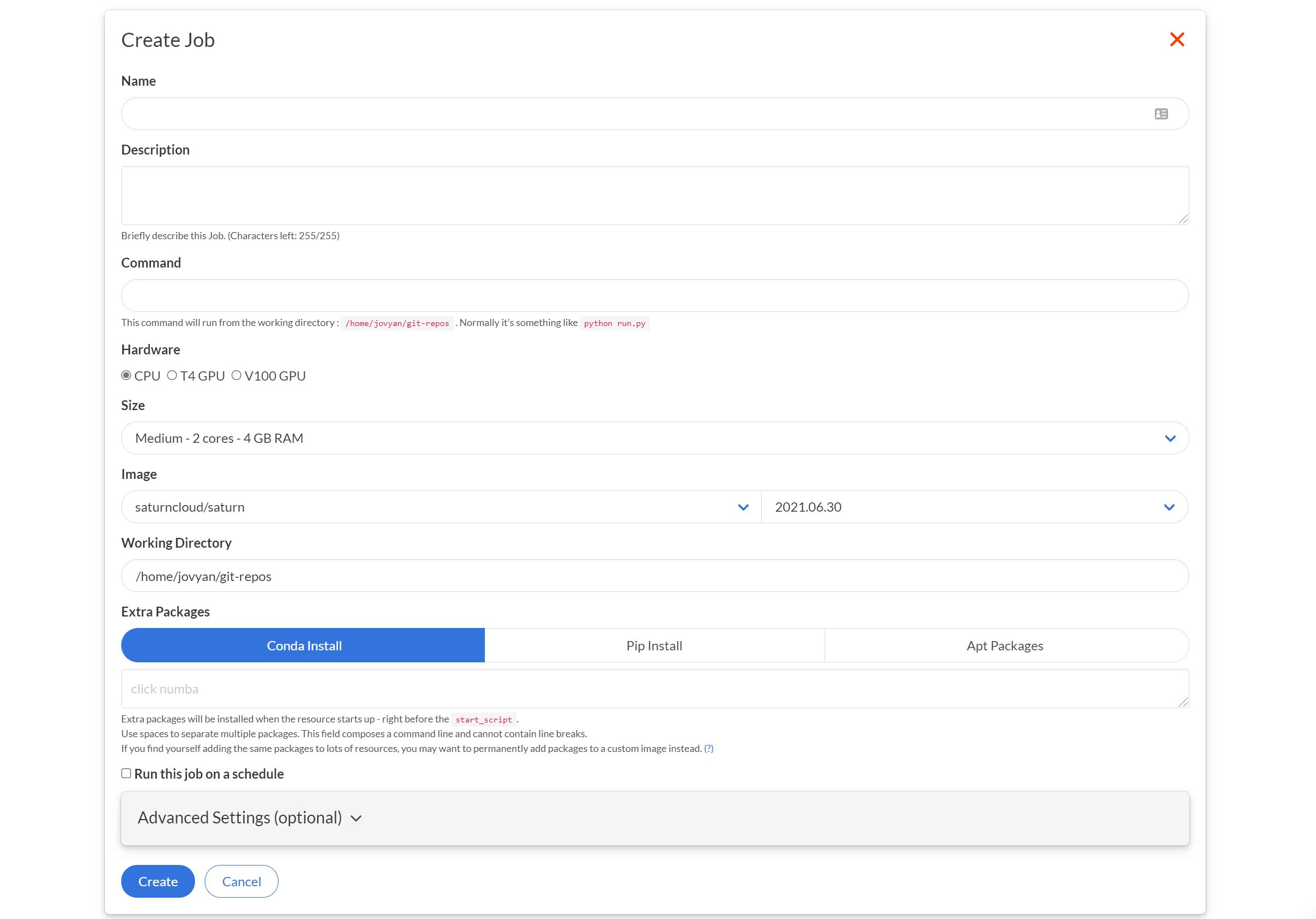
The options to set up the job are as follows:
- Name - the name of the job (must be unique).
- Command - the command to execute the job within the resource. Typically something like
python run.pywhererun.pyis a script in the resource. - Hardware - the type of hardware to use for the job, either a CPU or GPU.
- Size - the size of the instance to use for the job.
- Image - the image to use for the job.
- Run this job on a schedule - should the job be run once, or on a repeating basis. If on a schedule, more options become available:
- Cron Schedule - the frequency at which to run the job, specified as a cron expression. Note that scheduling can be at the minute level at most (not second)
- Concurrency Policy - should an instance of a job be able to run if the previous one hasn’t stopped? Select Allow for concurrent jobs, Forbid if only one job can run at a time (cancelling the new job), and Replace if only one job can run at a time (cancelling the original job).
- Backoff limit - attempts at starting the task before it should be considered it to have failed.
- Environment Variables (Advanced setting) - any specific environment variable values for the job.
- Start Script (Bash) (Advanced setting) - the script to run at startup of the image before the job is executed.
- Working Directory (Advanced setting) - where within the file directory the job command should be executed.
Pressing Create will add the job to the resource list and you will be taken to the resource page for the new job. Pressing the green triangle “go” button will make the job execute. If it’s on a schedule, it will run at the times you specify.
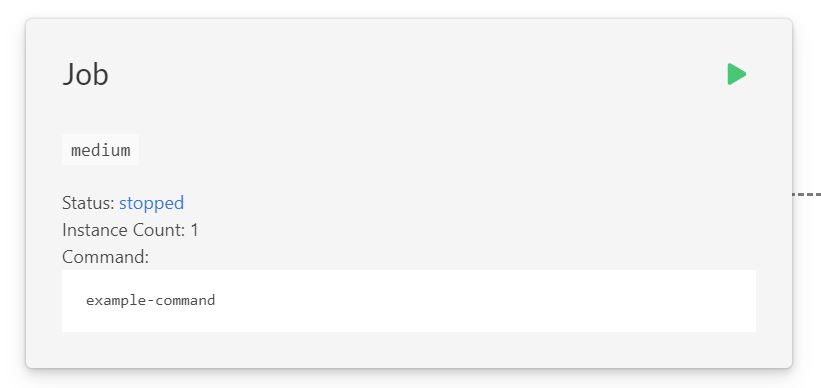
Accessing a Deployment
In the deployment’s details, a URL is shown. This is the URL for the deployment - clicking it will open the deployment. Deployments are protected by an internal authentication layer. When accessed, the user’s Saturn Cloud session is verified. If the user is not signed in, they will be prompted to sign in. Currently, any signed-in Saturn Cloud user can access a deployment if they have authorization.
Dashboards
Anyone who is logged in to Saturn Cloud and given appropriate permissions can view your deployed dashboards. Saturn Cloud can check whether someone is logged in, and it is possible to grant them access to the underlying resource.
APIs
To access a deployed API programmatically, you’ll need to ensure the machine making the request is authorized to access it. The HTTP request must include an authorization token in the header. If the machine making the request is a different Saturn Cloud resource (like a Jupyter Server), then the token is stored in an environmental variable name SATURN_TOKEN. If the request is being made from a machine outside of Saturn Cloud, then a user can get the token from first logging into Saturn Cloud and then going to https://app.community.saturnenterprise.io/api/user/token (the token is the hexadecimal value in quotes).
Once you have the correct token, you can make the HTTP request by adding a header key of Authorization with a value of token [YOUR TOKEN], for example:
import requests
import os
url = "https://hellosaturn.deploy.example.com"
SATURN_TOKEN = os.environ["SATURN_TOKEN"]
response = requests.get(
url,
headers={"Authorization": f"token {SATURN_TOKEN}"}
)
Troubleshooting Deployments and Jobs
For general troubleshooting, the logs for a deployment or job can be viewed by clicking the Status button in the resource details.
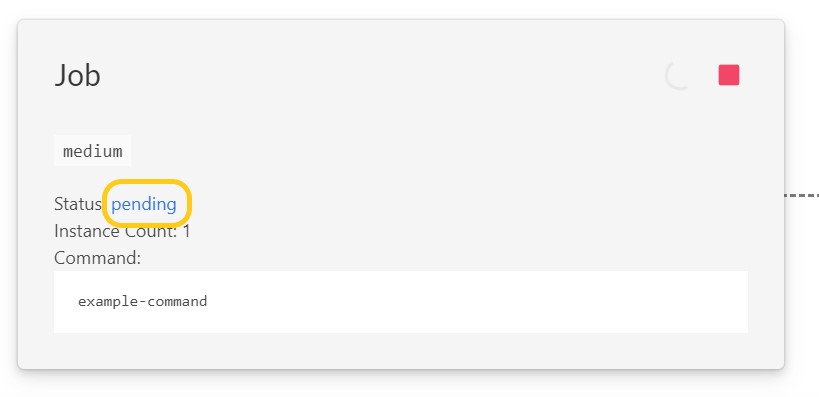
The Deployment Never Gets to “Ready” Status
The most likely cause of this is that deployment’s containers are either crashing, or exiting too quickly. Kubernetes expects deployments' containers to be long-running processes - if the deployment’s code is a simple short task, such as something that pulls work from a queue, it may need to be changed to a loop.
If the containers are crashing, errors should be shown in the deployment’s logs.
The Deployment’s status is “Ready”, but accessing the resource gives a status 502
The most likely cause of this is that nothing is bound to port 8000 within the deployment’s containers. 8000 is the only forwarded HTTP port - applications need to bind to it to be accessible. Another possibility is that the server is bound to 127.0.0.1 and not 0.0.0.0 - it needs to listen on all addresses to be accessible from outside of the container.
Need help, or have more questions? Contact us at:
- support@saturncloud.io
- On Intercom, using the icon at the bottom right corner of the screen
We'll be happy to help you and answer your questions!
